A piano concerto based on the solar system’s planets just had its world premiere. And you can hear a sampling of the music right here!
Move over, Gustav Holst. There’s a new Planets in town. And this one is based on astronomy, not astrology.
Holst’s seven-movement orchestral suite The Planets premiered in London in 1918. Now, a little more than a century later, a modern version on the theme saw first light on Sunday May 22, 2022. But while Holst turned to astrology for inspiration, composer Daniel Perttu turned to astronomy.
Genesis of A Planets Odyssey
Pianist Jeffrey Biegel’s longtime dream was to bring to life an updated version of Holst’s The Planets, infusing the music with current scientific understanding. Biegel was born deaf, and until the age of three, when corrective surgery allowed him to hear for the first time, his world was very closed. He relied on other means of expression and communication, and so music became his first language. As a result, his projects often have an “out of the box” element. Biegel’s vision of a revamped Planets features the pianist as a space traveler journeying through the solar system.
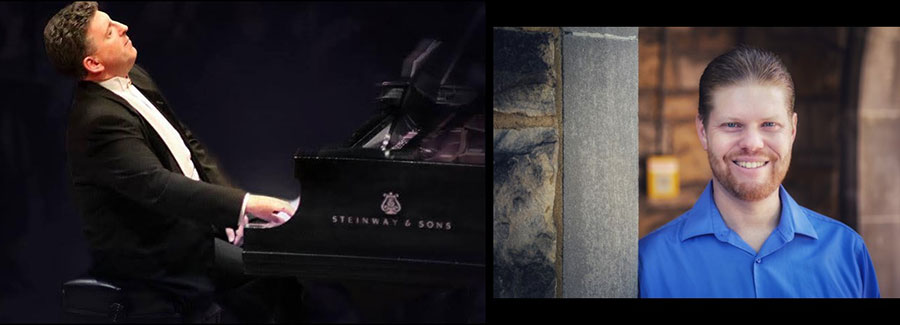
Jerry LoFaro / Derek D. Buck
A Planets Odyssey isn’t your typical three-movement concerto. Instead, it’s in a theme-and-variations form. “It begins with the Big Bang, followed by the pianist introducing the main theme of the concerto,” Perttu explains. “This theme is then varied as the pianist visits each planet and is inspired by the unique properties of each planet.” Like Holst, Perttu skips the Earth. But unlike Holst, these planets are featured in their order from the Sun. And more importantly, Perttu focuses solely on the science.
Pianist as Cosmic Traveler
Perttu picked a few characteristics of each planet for inspiration and transformed those into sonic visions. For example, Mercury, subject of the first variation, is the innermost and smallest of the solar system’s planets and experiences extremes in temperature. It also has virtually no atmosphere. So Perttu drew on those characteristics to produce a variation that conveys the imagery of a “stark, extreme kind of place.”
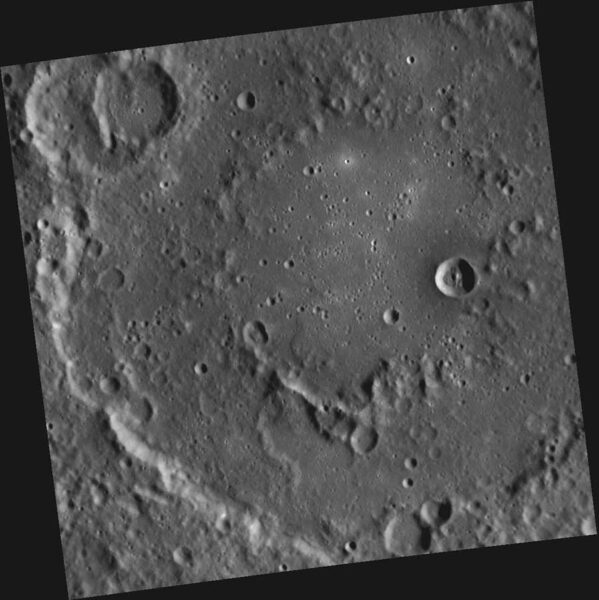
NASA / Johns Hopkins University Applied Physics Laboratory / Carnegie Institution of Washington
Venus is the brightest object in the night sky, apart from the Moon and the Sun. Its atmosphere is largely roiling clouds of carbon dioxide. At the planet’s surface, where temperatures reach a whopping 470°C (870°F), the pressure is some 90 times that of Earth’s. At some point in its early, cooler history, Venus may have had a shallow liquid-water ocean and may have harbored life, but that’s all long gone by now. The prospect of potential current or past life is always thrilling, and that’s the angle that sonically describes Venus in this variation.
Rounding out the rocky planets, Mars continues to capture our imagination, with its dusty red surface and the solar system’s biggest volcano. Perttu nevertheless reads a sadness in Mars’s story. A planet that once may have had a lush environment with liquid water on its surface — and perhaps life — is today instead a cold and arid world.
When we get to the gas giants, Perttu introduces a sense of airiness to the music. First comes majestic Jupiter, the largest planet in the solar system, rich in hydrogen and helium. It’s famous for its Great Red Spot, which is, in fact, one humongous storm that has raged for more than 300 years. The Great Red Spot and other storms on Jupiter are also sites of lightning! In fact, Perttu describes this passage as “swirly, blustery, and sometimes tempestuous.”
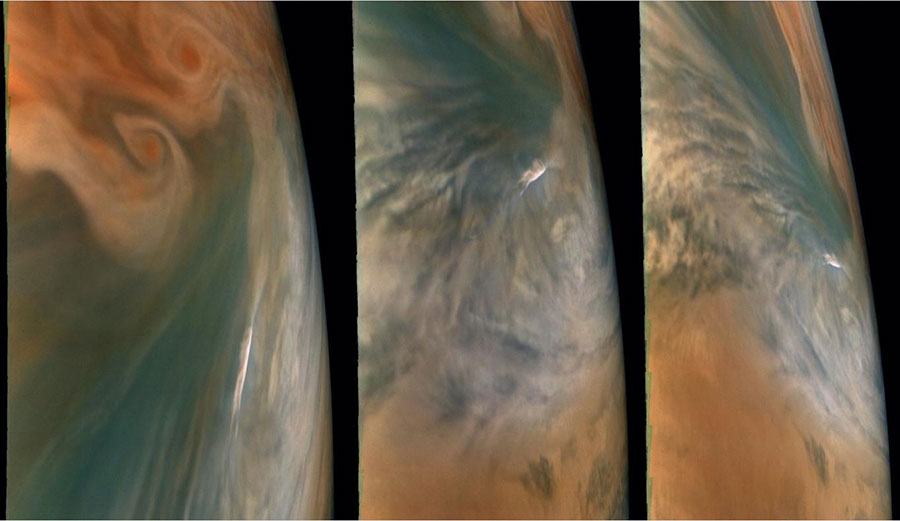
NASA / JPL-Caltech / SwRI / MSSS / Image processing: Brian Swift @ CC BY
Ask most any astronomer what drew them to the subject, and the answer — more often than not — is their first view of Saturn through a telescope. The sight of the ethereal planet with its system of rings is inspiring at every level. But to add to the planet’s attraction, we now know that its atmosphere contains diamonds. And not only that, but that the diamonds might fall as rain! Hence, Saturn’s variation is “slower but shimmery in its sensibility.”
William Herschel discovered Uranus in 1781. The ice giant’s atmosphere is largely hydrogen and helium, with traces of methane that give the planet its eerie, greenish hue (by absorbing the red wavelengths of light). Uranus is a planet with a quirk: A cataclysmic interaction with another body in the early solar system tipped it over on its side with respect to its orbital plane, so instead of orbiting the Sun like the other planets, it rolls along in its orbit. Because of this, Perttu has inverted the main theme in the variation, as well as infusing it with a dark, dismal sentiment.
Perttu composed the eighth variation to reflect a sense of windiness since the last of our planets, Neptune, is the windiest of them all. The blue ice giant, the most distant of all planets (more than 30 times the Earth-Sun distance), is dark and cold, and supersonic winds rage through its atmosphere at speeds greater than 2,000 km/h (1,200 mph). For comparison, the fastest winds recorded on Earth clock in at around 400 km/h.
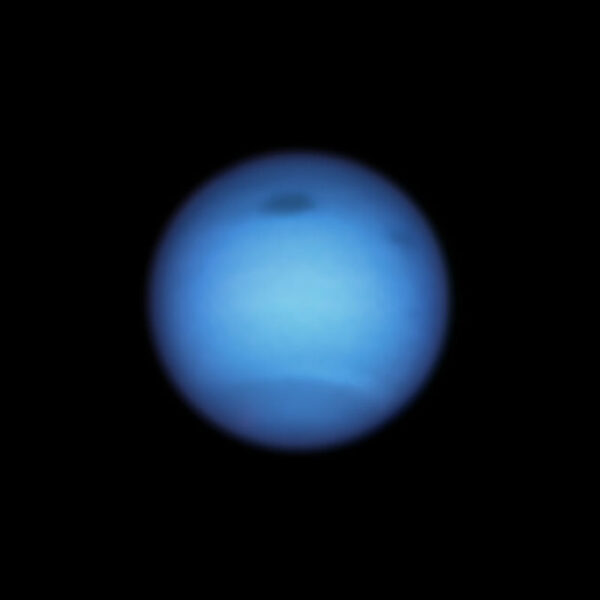
NASA / ESA / STScI / M. H. Wong (University of California, Berkeley) / L. A. Sromovsky and P. M. Fry (University of Wisconsin-Madison)
And in a neat final touch, we end our odyssey all the way out in the Kuiper Belt. Of course, when Holst composed The Planets, Pluto and other distant solar system objects hadn’t yet been discovered. But in a fitting coda to A Planets Odyssey, Perttu brings us to the very outer edges of our solar system.
And now . . . the music
On Sunday May 22, 2022, in the evening, the Canton Symphony Orchestra (lead commissioning orchestra in a consortium of multiple orchestras) ushered A Planets Odyssey into the world, under the direction of the Orchestra’s Music Director, Gerhardt Zimmermann. Biegel was at the piano.
Courtesy of Daniel Perttu
“Today is tomorrow's history,” Biegel said, after the concert. “There is a unique energy in the room when all the stars align to witness the birth of a new creation — Dan's A Planets Odyssey created a synergy of musical, spiritual, and scientific energies igniting the hearts and minds of the audience and the performers.” He concludes, “It is a feeling which joins us in an historic moment like no other.”
Perttu was also philosophical following the concert. “Writing this piece was not only about creating a musical representation of our scientific knowledge of the planets in 2020, but it was also about how the science can inspire imagination,” he mused. “Who would have thought of diamond rain?! There are mysteries in this universe that likely go beyond our most fantastical speculation — and this piece is meant to capture that spirit as well.”
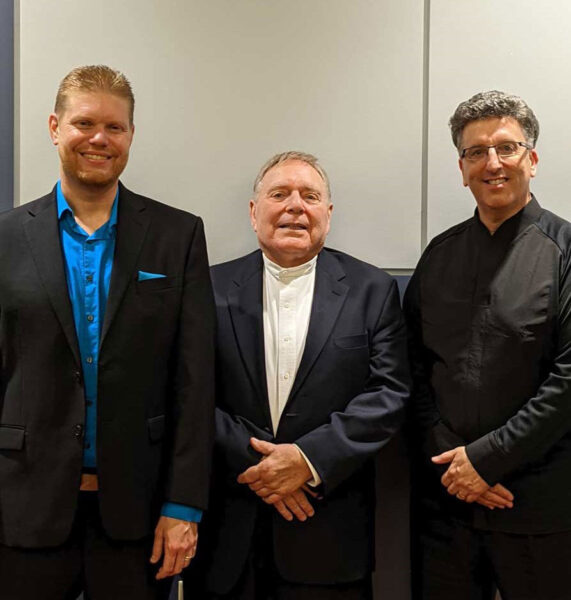
Jeffrey Biegel
After the thrill of Sunday evening, Biegel notes that the journey doesn’t finish there. He envisions “that A Planets Odyssey will serve the purposes of music, science and education for students learning about our solar system.”
If you’re in the Flagstaff, Arizona, area in September 2022, make sure you catch the next performance of A Planets Odyssey by the Flagstaff Symphony Orchestra conducted by Music Director Charles Latshaw, with Jeffrey Biegel as piano soloist.
 4
4









Comments
Anthony Barreiro
May 24, 2022 at 5:32 pm
Very cool.
Does the soundtrack contain a snippet of the theme and each variation? I listened a couple of times and I think I was able to follow along, but I'm not sure.
It would be very cool to hear this piece as the soundtrack for a planetarium show composed of images of each planet, and maybe ALMA images of protoplanetary disks for the opening theme.
A great work of art never gets old. We don't need to stop listening to Holst's tone poem in order to listen to this concerto. Each piece can inform and enrich our appreciation of the other work. The whole is greater than the sum of the parts.
By the way, William Herschel was an accomplished oboist, harpsichordist, and organist, and a prolific composer. If young Wilhelm could have made a living as a musician, he might never have had to get a day job (or in this case a night job) as an astronomer! Numerous recordings of his work are available. The London Mozart Players' recording of six of Herschel's symphonies is quite good.
You must be logged in to post a comment.
JeffreyBiegel
May 25, 2022 at 10:27 am
Dear Anthony,
Thank you for your comment! I like your ideas, and yes, this musical work would make for a fabulous soundtrack for any planetarium show! Perhaps readers who work for planetariums will read these comments. We do not have the work commercially recorded yet, and perhaps it would take a consortium of planetariums and space centers to underwrite the cost to record "A Planets Odyssey". It is my hope that this will become a new soundtrack to our solar system.
Yours,
Jeffrey Biegel
You must be logged in to post a comment.
Joe Slomka
May 27, 2022 at 6:10 pm
Mr Biegel
Do you have any idea when a CD of this work would be available. I'd love to have it as a companion to Holst's.
BTW, I am also very heard of hearing: partially hearing in one ear and totally deaf in the other.
Thanks
You must be logged in to post a comment.
adolfo rufatt
May 27, 2022 at 5:26 pm
Wonderful! As a first step, Couldn't you add video to this audio as the soundtrack?
You must be logged in to post a comment.
You must be logged in to post a comment.